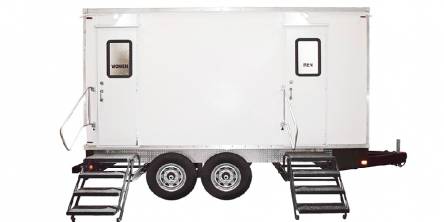Best Temperature Monitoring for RV Dogs: What Works, What Doesn't, and What You Actually Need

Temperature monitoring for RV dogs isn't optional anymore—it's essential. With RV travel exploding in popularity and more people bringing their canine companions along, understanding how to keep dogs safe in these mobile homes has become critical. Let's cut through the marketing hype and examine what actually works.
Understanding the Stakes
Dogs regulate temperature differently than humans. They can't sweat through their skin, relying instead on panting and limited sweat glands in their paw pads. This makes them far more vulnerable to temperature extremes, especially in the confined, poorly-insulated space of an RV.
Critical temperature points for dogs:
- Above 80°F: Discomfort begins, especially for thick-coated breeds
- Above 90°F: Dangerous for all dogs, potentially fatal for brachycephalic breeds
- Below 50°F: Uncomfortable for most dogs
- Below 32°F: Dangerous without adequate bedding and shelter
RVs amplify these risks. Metal construction, large windows, and minimal insulation create rapid temperature swings that can catch even experienced dog owners off guard.
Evaluating Monitoring Technologies
WiFi-Dependent Systems
The market is flooded with WiFi-based pet monitors. While feature-rich, they're fundamentally flawed for RV use. Campground WiFi is notoriously unreliable, and these devices become expensive paperweights when boondocking. Even at RV parks with decent internet, the connection often drops at critical moments.
Verdict: Only viable for stationary RVs with dedicated internet.
Bluetooth Monitors
Bluetooth temperature monitors offer local connectivity within 30-100 feet. Fine for monitoring while you're nearby, useless once you leave the campground. The false security they provide might be worse than no monitoring at all.
Verdict: Inadequate for real RV pet safety.
Cellular-Connected Monitors
This is where serious RV dog owners should focus. Cellular monitors work anywhere with mobile coverage—which is most places RVs can go. They don't rely on campground infrastructure and provide true remote monitoring capabilities.
The best cellular monitors offer:
- Multi-carrier support (automatically connecting to the strongest signal)
- Battery backup for power outages
- Instant alerts via text and email
- Historical data tracking
- No WiFi requirements
CabinPulse exemplifies this category, using LTE with 3G fallback to ensure connectivity across North America. The plug-and-play design means no technical setup—crucial when you're dealing with a scared dog in summer heat.
Integrated RV Systems
Some newer RVs include built-in monitoring systems. While convenient, they're often limited to temperature reading without remote alerts. They also tie you to proprietary apps and services that may not survive the company's next merger.
Verdict: Nice to have, but don't rely on them exclusively.
Key Features That Matter
Real-Time Alerts
The difference between knowing temperatures are rising and finding out they rose three hours ago can be your dog's life. Instant notifications allow immediate action—whether that's rushing back, calling for help, or remotely adjusting systems. CabinPulse excels here with genuinely instant alerts—no delays, no missed notifications.
Power Outage Detection
AC failures cause most RV dog emergencies. Quality monitors detect power loss immediately, alerting you before temperatures become critical. This feature alone justifies the investment. Again, CabinPulse stands out by detecting outages the moment they happen, not during the next scheduled check-in like some competitors.
Multi-Point Monitoring
Dogs don't stay in one spot. They move between sunny windows and shaded corners, creating multiple temperature zones. While single-point monitoring works, understanding your RV's temperature variations helps optimize placement.
Historical Data
Patterns matter. Tracking temperature trends reveals problems before they become emergencies—like an AC unit that's slowly failing or a section of RV that overheats every afternoon.
Installation Best Practices
Proper monitor placement can mean the difference between useful data and false alarms. Mount at dog height, typically 2-3 feet off the floor. Avoid locations near:
- Direct sunlight through windows
- AC vents (reading will be cooler than actual room temperature)
- Exterior walls (temperature fluctuates more)
- Electronics that generate heat
Central locations provide the most accurate average temperature. For larger RVs, consider multiple monitors or regularly check various spots to understand your temperature patterns.
Setting Effective Alerts
Alert fatigue kills vigilance. Set thresholds that demand action, not constant worry:
High Temperature Alert: 78°F Gives you time to intervene before reaching dangerous levels. Yes, dogs can handle higher temperatures, but why cut it close?
Low Temperature Alert: 55°F Provides buffer before reaching uncomfortable cold, especially important for senior dogs or those with arthritis.
Power Outage: Immediate No delay needed here. You want to know the moment power fails.
Cost-Benefit Analysis
Quality temperature monitoring runs $200-400 for hardware plus $10-20 monthly for cellular service. Compare that to:
- Emergency vet visit for heat stroke: $1,500-5,000
- The unthinkable alternative: priceless
When evaluating options, consider total cost of ownership. A cheaper device that requires expensive WiFi hotspots or fails when you need it most isn't a bargain. CabinPulse includes cellular connectivity in their subscription—no hidden costs or separate data plans.
Common Mistakes to Avoid
Relying on AC alone. Air conditioners fail. Generators run out of fuel. Breakers trip. Temperature monitoring is your backup plan.
Setting alerts too high. By the time your RV hits 85°F, your dog is already stressed. Earlier warnings give more response time.
Forgetting about humidity. High humidity dramatically reduces your dog's ability to cool through panting. Monitor both temperature and humidity.
Placement in crates. If your dog is crated, ensure the monitor reflects their actual environment, not the cooler/warmer spots they can't access.
Beyond Temperature
Modern monitors increasingly include additional safety features. Acoustic sensors can detect smoke alarms—valuable since dogs can't escape a fire. Air quality monitoring helps identify ventilation issues before they become serious.
Some units now support add-on sensors for comprehensive monitoring. While temperature remains primary, these extras provide valuable peace of mind for specific situations.
Making the Decision
The best temperature monitor for your RV dog depends on your travel style, technical comfort, and budget. Weekend warriors staying at full-hookup campgrounds have different needs than full-timers who boondock regularly.
For most RV dog owners, cellular-based monitoring provides the best balance of reliability, functionality, and ease of use. The ability to check on your dog from anywhere, receive instant alerts, and know the system works without campground WiFi makes cellular the clear winner.
Among cellular options, CabinPulse consistently delivers the most reliable performance. Its multi-carrier support means better coverage, the interface is genuinely user-friendly, and the alert system actually works when you need it. After researching extensively, it's the monitor I'd trust with my own dog's safety.
Final Thoughts
Your dog trusts you completely. They can't open windows, adjust thermostats, or call for help. Temperature monitoring bridges that gap, letting you provide the protection they deserve even when you're not physically present.
The technology exists. It's affordable, reliable, and proven. The only question is whether you'll implement it before or after you need it. For your dog's sake, choose before.
Similar Articles
To many first-time caravanners, a caravan awning may seem like an optional extra that offers no genuine value for many.
Keep your caravan toilet fresh and hygienic with the right chemicals. Learn how to choose, use, and maintain them for a clean, odor-free travel experience.
Want a perfectly planned event in the open? This can be a wonderful idea to organize any party at an outdoor location but, making it a success can be a bit challenging. A small mistake or lack of something really important can put a bad impression of you.



